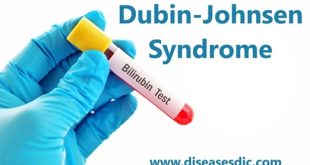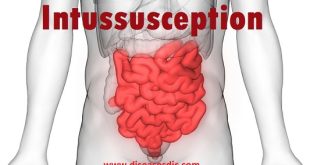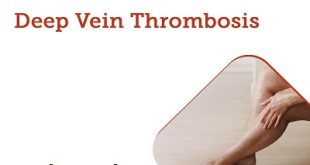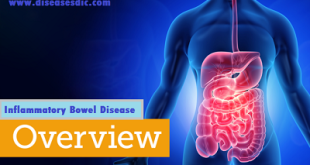Definition
Diarrhea is loose, watery stools. A person with this typically passes stool more than three times a day. People with it may pass more than a quart of stool a day. Acute diarrhea is a common problem that usually lasts 1 or 2 days and goes away on its own without special treatment. If it is prolonged for more than 2 days may be a sign of a more serious problem and poses the risk of dehydration. Chronic diarrhea may be a feature of a chronic disease.
Difference in flow of stool in large intestine
There are two general types:
Acute diarrhea or Infectious diarrhea
- It is caused by a virus, parasite, or bacterium. It can spread quickly from person-to person, especially in daycare centers.
- Some of the causes of infectious diarrhea, such as Campylobacteriosis, shiga-toxin producing coli, giardiasis, salmonellosis and shigellosis, are discussed in their own fact sheets found in this document.
- There are other agents that can also cause infectious diarrhea in children.
- These include parasites (e.g., cryptosporidiosis, amoeba) other bacterial (e.g., yersinia) and other viruses (e.g., Rotavirus).
Chronic diarrhea or Non-infectious diarrhea
- Non-infectious Diarrhea can be caused by toxins (e.g., certain types of food poisoning), chronic diseases (e.g., cystic fibrosis) or antibiotics (e.g., ampicillin).
- It does not spread from person-to-person.
Background of diarrhea
For centuries, acute diarrhea has been a major worldwide cause of death in young children, and until 1973, no infectious agents could be identified in about 80% of patients admitted to hospital with severe dehydrating diarrhea.
In 1973 Ruth Bishop, Geoffrey Davidson, Ian Holmes, and Brian Ruck identified abundant particles of a ‘new’ virus (rotavirus) in the cytoplasm of mature epithelial cells lining duodenal villi and in feces, from such children admitted to the Royal Children’s Hospital, Melbourne.
Rotaviruses have now been shown to cause 40-50% of severe acute diarrhea in young children worldwide in both developing and developed countries, and > 600 000 young children die annually from rotavirus disease, predominantly in South-East Asia and sub-Saharan Africa.
Longitudinal surveillance studies following primary infection in young children have shown that rotavirus reinfections are common.
Prevalence of diarrhea
Worldwide, acute diarrhea constitutes a major cause of morbidity and mortality, especially among the very young, very old, and infirm. It is estimated that each year, U.S. adults experience 99 million episodes of acute diarrhea or gastroenteritis, resulting in about 8 million physician visits and more than 250,000 hospital admissions each year (1.5% of adult hospitalizations). Most acute diarrhea or gastroenteritis cases are caused by enteric infections. Food and waterborne outbreaks involving a relatively small subset of population and recurrent bouts of illness in others comprise most cases.
It is more prevalent among adults who are exposed to children and non-toilet-trained infants, particularly in a daycare setting. It is also more prevalent in travelers to tropical regions, homosexual males, persons with underlying immunosuppression, and those living in non-hygienic environments who are exposed to contaminated water or foods. Women are more susceptible to travel-related diarrhea than men.
Causes of diarrhea
Acute diarrhea causes may include:
- Antibiotic-associated diarrhea
- difficile infection
- Cryptosporidium infection
- Cytomegalovirus (CMV) infection
- E. coli
- Food intolerances
- Food poisoning
- Fructose intolerance
- Artificial sweeteners
- Giardiasis (Giardia infection)
- Lactose intolerance
- Norovirus infection
- Medicines, such as antacids containing magnesium and some cancer treatments
- Rotavirus
- Salmonella infection
- Shigella infection
- Stomach surgery
- Traveler’s diarrhea
Chronic diarrhea causes may include:
- Celiac disease
- Colon cancer
- Crohn’s disease
- Inflammatory bowel disease (IBD)
- Intestinal obstruction
- Medications used to treat heartburn, such as proton pump inhibitors and H2 receptor antagonists
- Ulcerative colitis
- Whipple’s disease
Risk factors
- Exposure to infectious agents is the major risk factor for acute diarrhea.
- Medications such as antibiotics and drugs that contain magnesium products are also common offenders. Recent dietary changes can also lead to acute diarrhea.
- Acute bloody diarrhea suggests a bacterial cause like Campylobacter, Salmonella or Shigella or Shiga-toxin coli.
- Traveler’s diarrhea is common in those who travel to developing countries and results from exposure to bacterial pathogens most commonly enterotoxigenic coli.
Complications of diarrhea
- Dehydration is common among adult patients with acute diarrhea who have large amounts of watery stool, particularly when the intake of fluids is limited by lethargy or is associated with nausea and vomiting.
- It also is common in infants and young children who develop viral gastroenteritis or bacterial infection.
- Patients with mild dehydration may experience only thirst and dry mouth.
- Moderate to severe dehydration may cause orthostatic hypotension with (fainting or light-headedness upon standing) due to a reduced volume of blood, which causes a drop in blood pressure upon standing). A diminished urine output, severe weakness, shock, kidney failure, confusion, acidosis (too much acid in the blood), and coma also may occur.
- Electrolytes (minerals) are lost with water when diarrhea is prolonged or severe, and mineral or electrolyte deficiencies may occur. The most common deficiencies occur with sodium and potassium. Abnormalities of chloride and bicarbonate also may develop.
- Finally, there may be irritation of the anus due to the frequent passage of watery stool containing irritating substances.
Signs and symptoms
Diarrhea Associated Symptoms and Signs:
- Watery, liquid stools
- Abdominal cramps
- Fever
- Bloating and gas
- The urgent feeling or need to have a bowel movement
- Dehydration
- Borborygmi
- Perianal erythema
Diarrhea can cause dehydration. Loss of electrolytes through dehydration affects the amount of water in the body, muscle activity, and other important functions. Dehydration is particularly dangerous in children, older adults, and people with weakened immune systems.
Symptoms of dehydration in adults include:
- Dizziness or light-headedness.
- Muscular cramps.
- Sunken eyes.
- Passing little urine.
- A dry mouth and tongue.
- Becoming irritable.
Signs of dehydration in infants and young children include
- Dry mouth and tongue
- No tears when crying
- No wet diapers for 3 hours or more
- Sunken eyes, cheeks, or soft spot in the skull
- High fever
- Listlessness or irritability
Diagnosis and test
Fecal laboratory studies include the following:
- Examination for ova and parasites
- Leukocyte count
- pH level: A pH level of 5.5 or less or the presence of reducing substances indicates carbohydrate intolerance, which is usually secondary to viral illness
- Examination of exudates for presence/absence of leukocytes
- Cultures: Always culture for Salmonella, Shigella, and Campylobacter spp and enterocolitica in the presence of clinical signs of colitis or if fecal leukocytes are present; look for Clostridium difficile in those with diarrhea characterized by colitis and/or bloody stools; assess for Escherichia coli, particularly O157:H7, with bloody diarrhea and a history of eating ground beef; screen for Vibrio and Plesiomonas spp with a history of eating raw seafood or foreign travel
- Enzyme immunoassay for rotavirus or adenovirus antigens
- Latex agglutination assay for rotavirus
Other laboratory studies may include the following:
- Serum albumin levels: Low in protein-losing enteropathies from enteroinvasive intestinal infections (eg, Salmonella spp, enteroinvasive E coli)
- Fecal alpha1-antitrypsin levels: High in enteroinvasive intestinal infections
- Anion gap to determine nature of the diarrhea (ie, osmolar vs secretory)
- Intestinal biopsy: May be indicated in the presence of chronic or protracted diarrhea, as well as in cases in which a search for a cause is believed to be mandatory (eg, in patients with acquired immunodeficiency syndrome [AIDS] or patients who are otherwise severely immunocompromised)
Treatment and Medications
Rehydration
- In most cases of acute diarrhea, fluid and electrolyte replacement are the most important forms of therapy. If patients are otherwise healthy and are not dehydrated, adequate oral intake can be achieved with soft drinks, fruit juice, broth, soup, and salted crackers.
- In those with excessive fluid losses and dehydration, more aggressive measures such as IV fluids or oral rehydration therapy with isotonic electrolyte solutions containing glucose or starch should be instituted.
- Oral rehydration therapy is less expensive, often just as effective as and more practical than intravenous fluids. A number of oral rehydration solutions are available, including
- Pedialyte,
- Rehydralyte,
- Ricelyte (Infalyte),
- Resol,
- An equally effective homemade mixture includes
1/2 tsp salt (3.5 g),
1 tsp baking soda (2.5 g NaHCO3),
8 tsp sugar (40 g)
8 oz orange juice (1.5 g KCl),
- Diluted to 1 L with water. Fluids should be given at rates of 50-200 mL/kg/24 hr, depending on the patient’s hydration status.
- IV fluids (e.g., lactated Ringer’s solution) are preferred acutely for patients with severe dehydration and for those who cannot tolerate oral fluids.
Diet
- Total food abstinence is unnecessary and not recommended.
- Foods providing calories are necessary to facilitate renewal of enterocytes.
- Patients should be encouraged to take frequent feedings of fruit drinks, tea, flat carbonated beverages, and soft, easily digested foods such as bananas, applesauce, rice, potatoes, noodles, crackers, toast, and soup.
- Dairy products should be avoided, because transient lactase deficiency can be caused by enteric, viral, and bacterial infections.
- Caffeinated beverages and alcohol, which can enhance intestinal motility and secretions, should be avoided.
Antidiarrheal Agents
- Antidiarrheal agents can be useful for the amelioration of symptoms. The most effective agents are the opioid derivatives includes:
- Loperamide,
- Diphenoxylate-atropine
- Tincture of opium.
- These agents inhibit intestinal peristalsis, facilitating intestinal absorption, and have anti-secretory properties.
- Loperamide may reduce the duration of diarrhea in those with traveler’s diarrhea and bacillary dysentery.
- These agents should be avoided in patients with fever, bloody diarrhea, and possible inflammatory diarrhea because they may be associated with prolonged fever in patients with shigellosis, toxic megacolon in patients with C. difficile infection, and the hemolytic-uremic syndrome in children with Shiga toxin–producing coli.
Antimicrobial Treatment
- Empirical treatment is indicated for those patients with suspected invasive bacterial infection, traveler’s diarrhea, or immunosuppression.
- Rifaximin may be used to treat moderate to severe traveler’s diarrhea. Empirical antibiotic treatment is also appropriate specifically for early Campylobacter infections and difficile – associated diarrhea as well as for the febrile patient with fecal leukocytes and hemoccult-positive stools.
- Empirical treatment for Giardia can be prescribed for those with a 2-week or longer history of diarrhea. Empirical parasitic treatment should be considered for those in the following situations:
- History of diarrhea following travel to Russia, Nepal, or other endemic areas
- Exposure to infants in daycare centers
- Homosexual exposure or exposure to patients with AIDS
- Community waterborne outbreak
- History of bloody diarrhea with a history of few or no white blood cells (WBCs), suggesting amebiasis
Prevention and control of diarrhea
Measures that interrupt the transmission of pathogens:
The various infectious agents that cause it are all transmitted by common faecal-oral pathways, such as contaminated water, food, and hands. Measures taken to interrupt the transmission of the causative agents should focus on these pathways. Important measures of proven efficacy include:
- Giving only breast milk for the first 4-6 months of life
- Avoiding the use of infant feeding bottles
- Improving practices related to the preparation and storage of weaning foods (to minimize microbial contamination and growth)
- Using clean water for drinking
- Washing hands (after defecation or disposing of faeces, and before preparing food or eating)
- Safely disposing of faeces, including those of infants
- Immunization against measles
 Diseases Treatments Dictionary This is complete solution to read all diseases treatments Which covers Prevention, Causes, Symptoms, Medical Terms, Drugs, Prescription, Natural Remedies with cures and Treatments. Most of the common diseases were listed in names, split with categories.
Diseases Treatments Dictionary This is complete solution to read all diseases treatments Which covers Prevention, Causes, Symptoms, Medical Terms, Drugs, Prescription, Natural Remedies with cures and Treatments. Most of the common diseases were listed in names, split with categories.








How to do for treatment?
Please follow the treatments given here or if diarrhea is severe consult with Doctor.
cannot leave bathroom having a bm constantly
could my meds be causing?
400 mg of ivyprofren 4 times a day
10 mg of oxycodone 4 times a day
4-200 mg of ivyprofren 4 times a ca
200 mg of provigil 4 times a day
and 20mg of retinal 4 times a day
I follow up with 2 teaspoons of
post e.r. Severe pain ;history intestinal operations recently @ 1 yr., compiled now w/ Anemia!! Today -swelling!?!? Stress???
Please consult a doctor as soon as possible.
compliment of the day. my own comments are:- A Big Thanks to the initiators of this application. wish the best of luck in goals.
NB.
I have being in serious problem with this food poisoning case. for more than 2 weeks, I have taking a lot of drug but it don’t stop, when ever i eat after 30min I will go to toilet for watery stool, no pain, no depression to fever etc. I think my case has developed to parasite intestine bacterial case, pls advice me on to remedy it. thanks.
It would be better if you consult a doctor as soon as possible. Get help from a gastroenterologist.
my case is more than 2 week of watery stool after 30min of intake
Please consult a doctor as soon as possible.
oflaxicin and metronidazole with lopramadie are the best remedies ,plz avoid diary products for better results
Please put treatment guidelines for pediatric diarrhea !
we will update it soon!